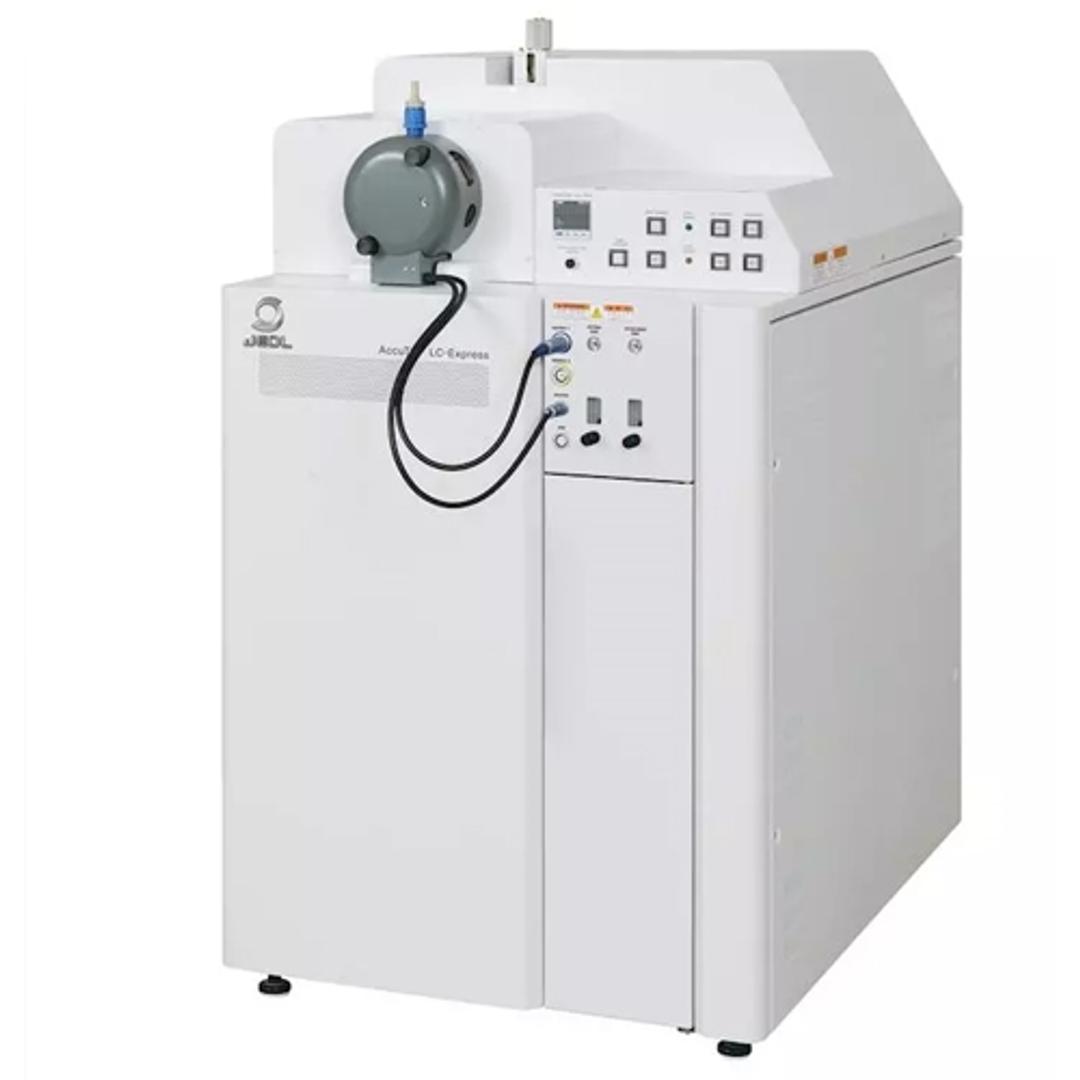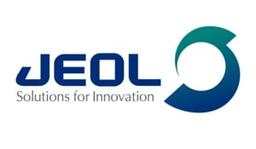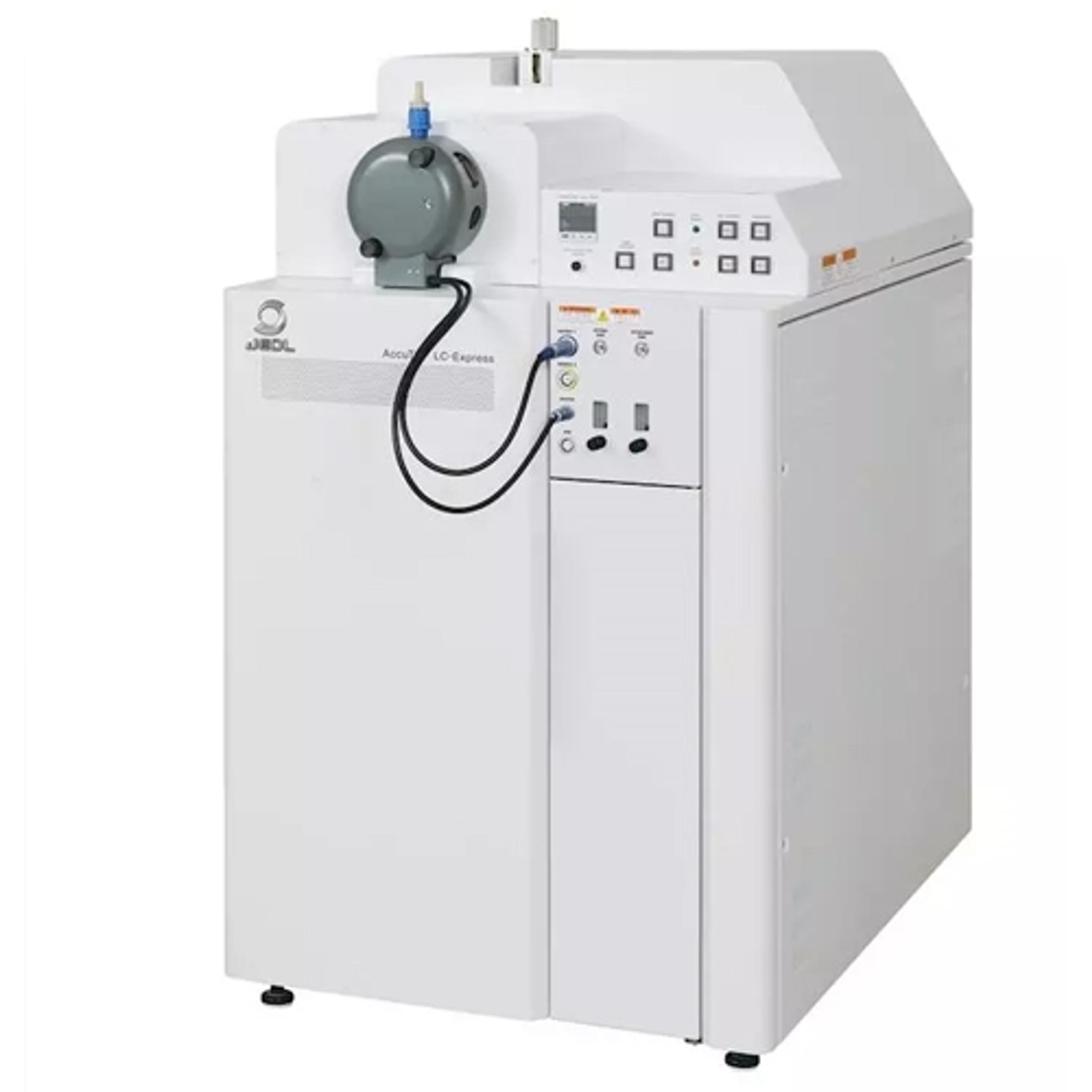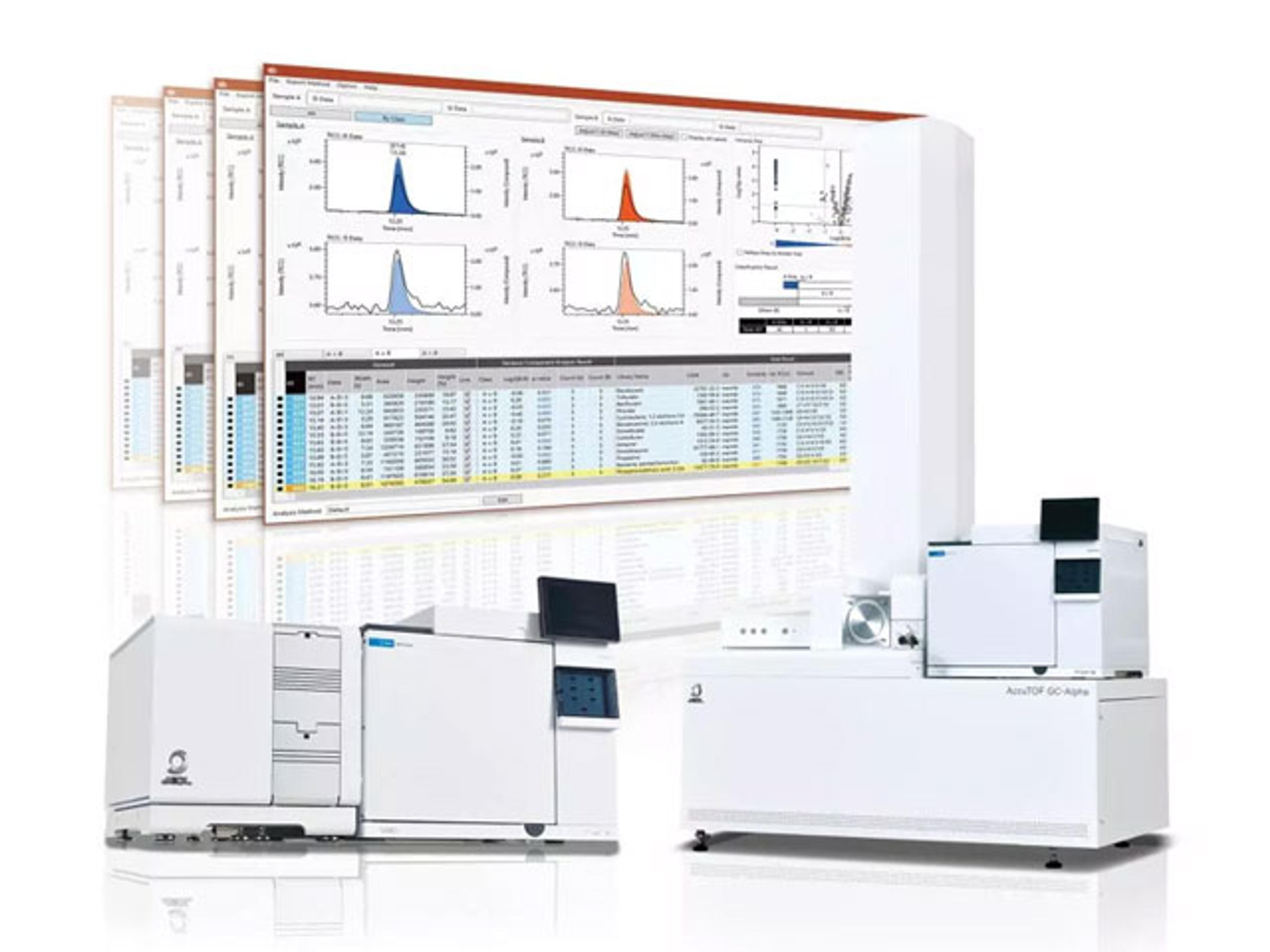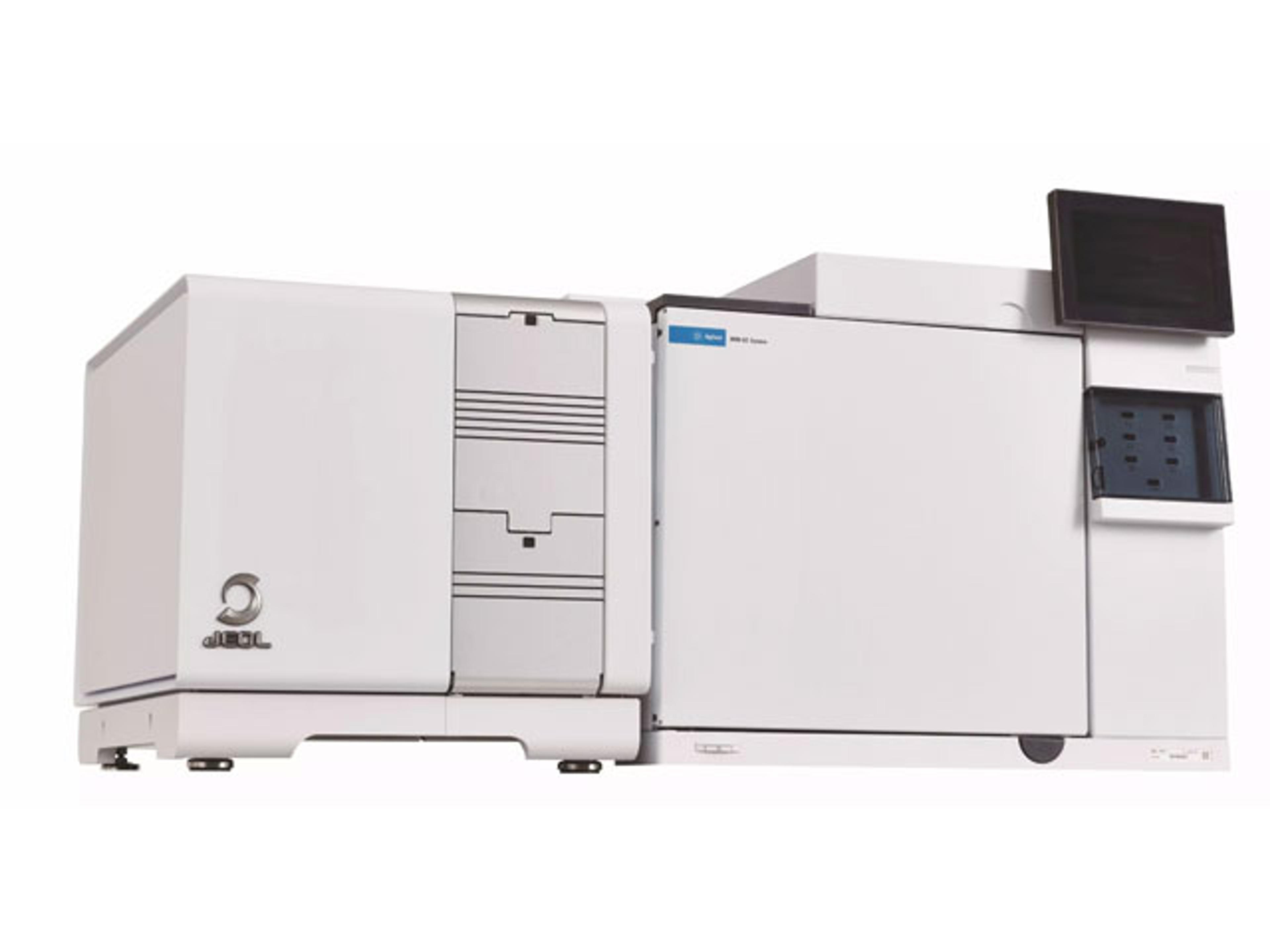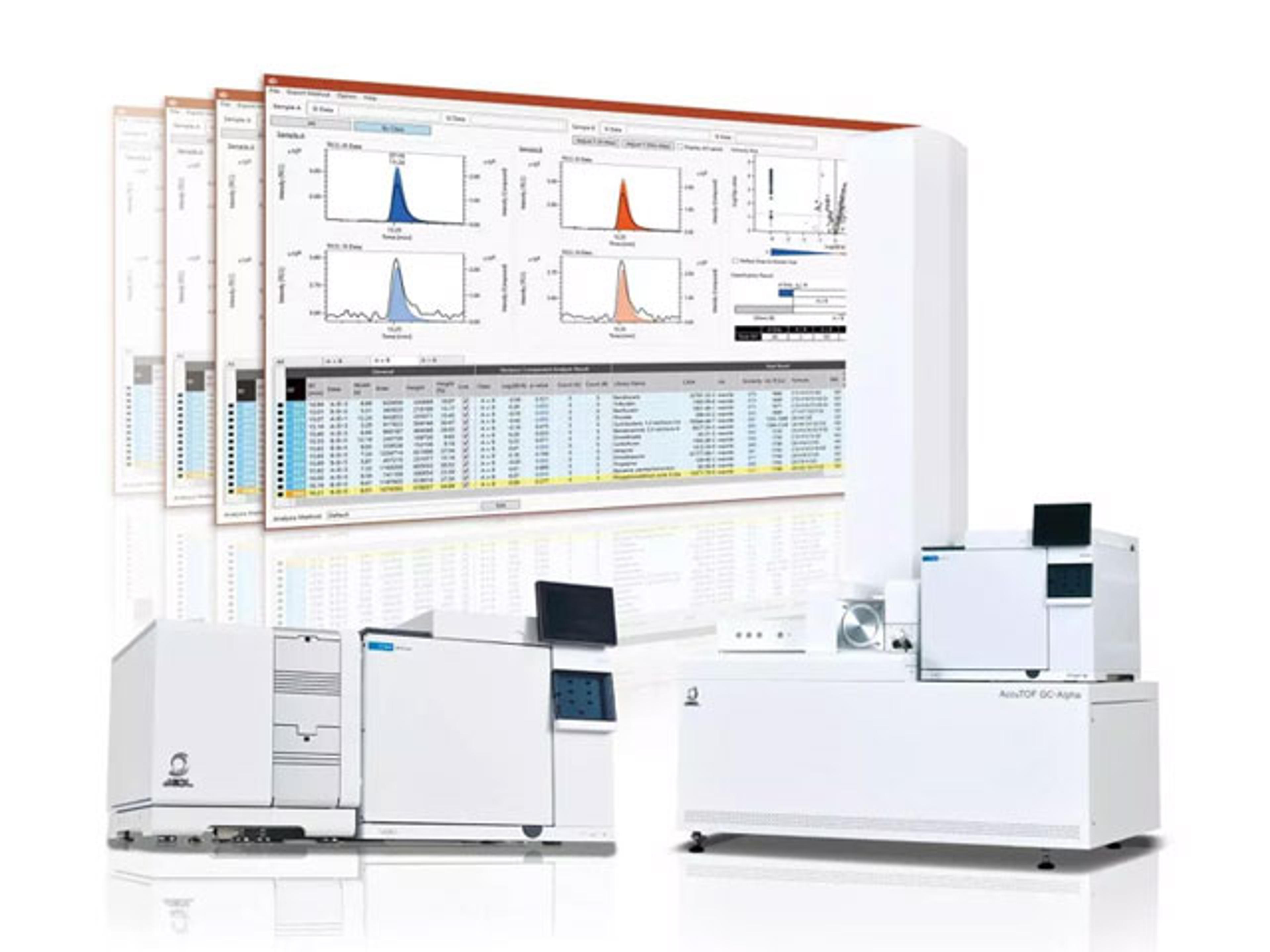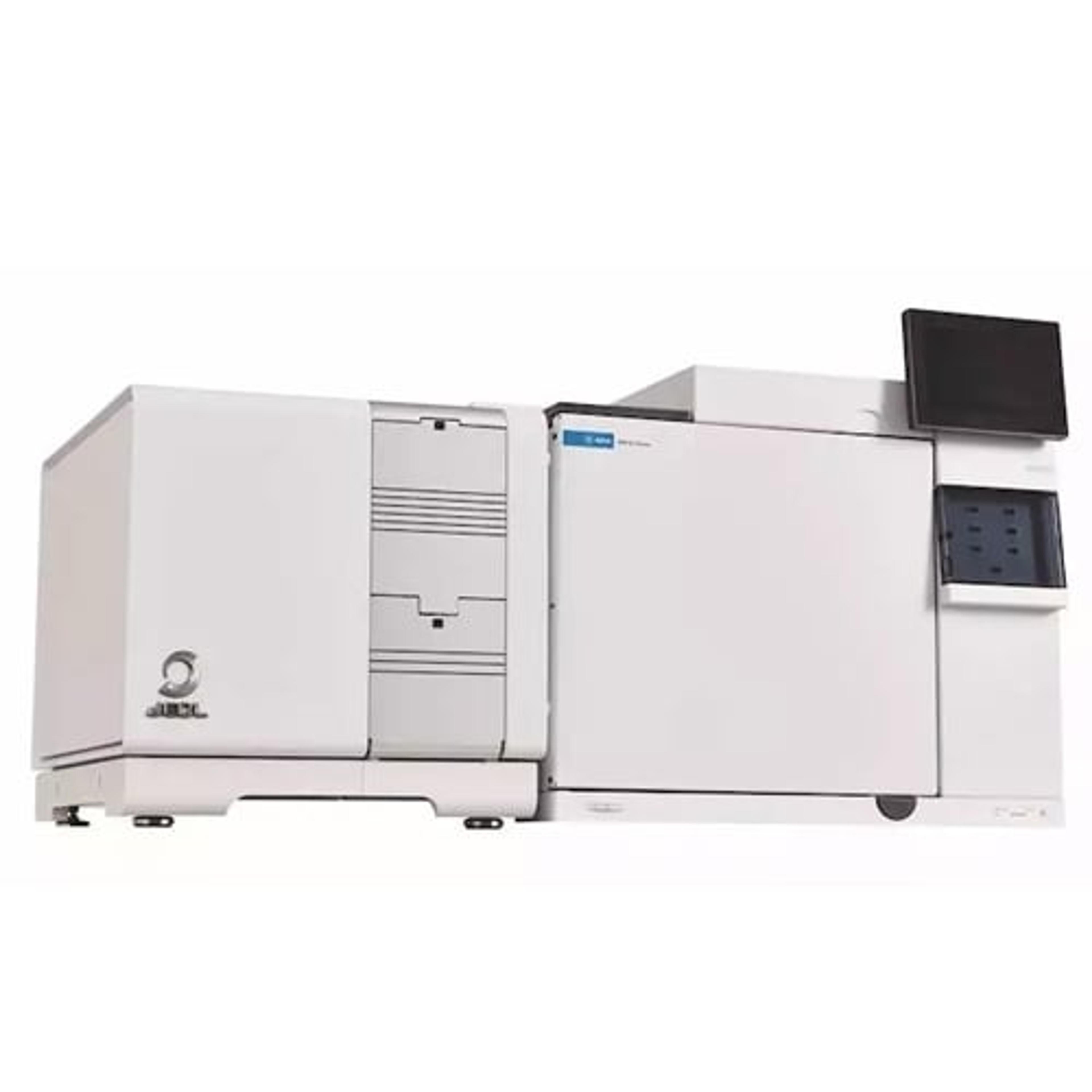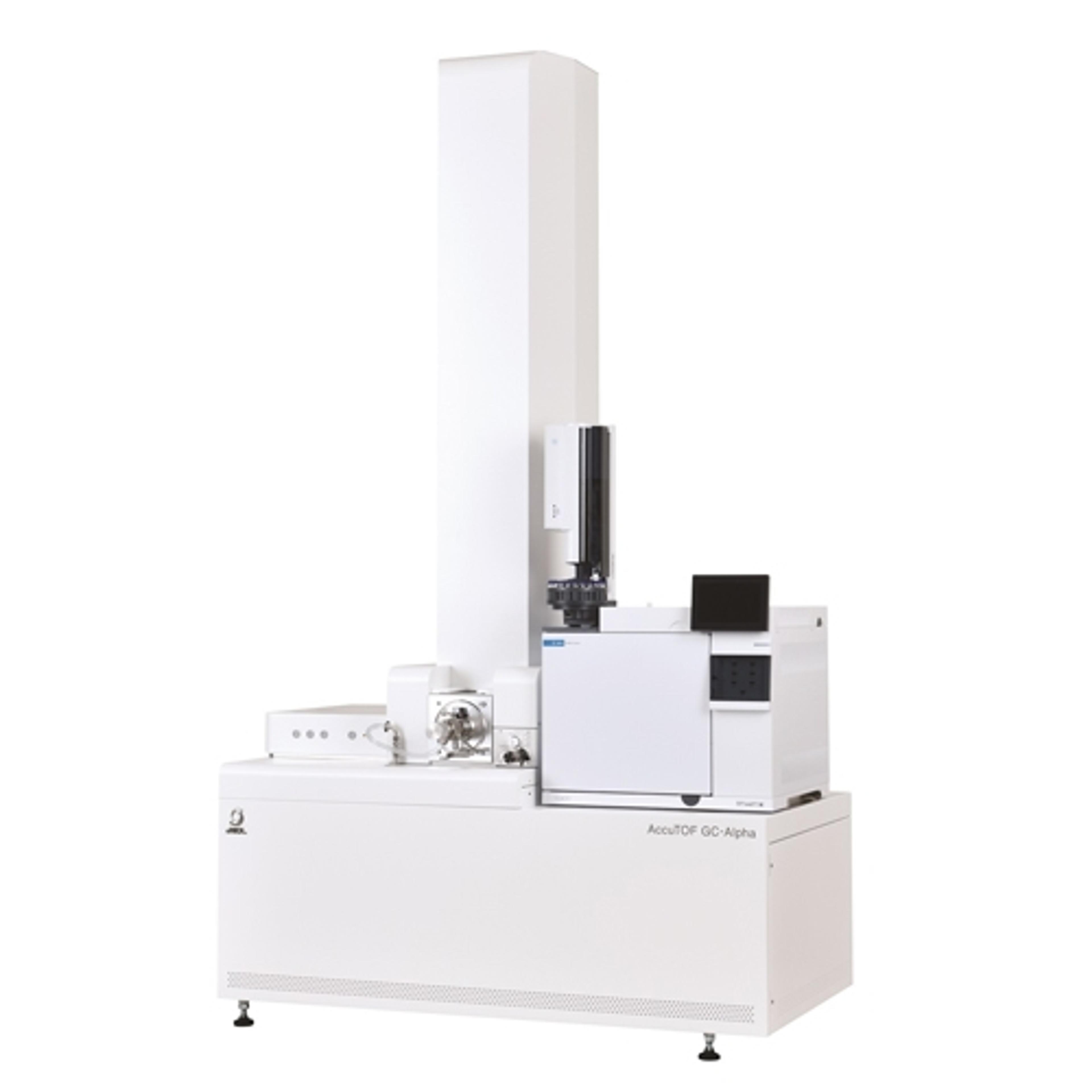AccuTOF™ LC-Express Time-of-Flight Mass Spectrometer
The JMS-T100LP AccuTOF™ LC-Express 4G Time-of-Flight Mass Spectrometer is based on our award-winning AccuTOF time-of-flight analyzer platform. The AccuTOF analyzer design employs elegant ion optics and an ADC-based digitizer to deliver a dynamic range exceeding 4 orders of magnitude, without compromising sensitivity, resolution or mass accuracy.
The basic system comes standard with an orthogonal spray ESI source. Optionally available ion sources include: APCI, Dual Spray ESI, Micro ESI, Nano ESI, and the revolutionary Direct Analysis in Real Time (DART). All sources are coupled to the AccuTOF via our unique atmospheric pressure interface. An integrated chassis consolidates all requisite spectrometer components, including pumps, into a compact benchtop footprint. This design not only saves space, but also ensures that temperature-sensitive components such as the flight tube remain under controlled conditions. From ion source to detector, the robust AccuTOF LC-plus 4G design makes high-resolution, high-sensitivity accurate mass analyses routine.
LC/MS
The AccuTOF LC-plus 4G is also a simple and robust LC/MS system. It offers a wide variety of applications for LC/MS with optional Atmospheric Pressure Chemical Ionization (APCI) source, in addition to the standard orthogonal ESI source. Accurate mass measurements in LC/MS can be made routine by automating the introduction of the internal mass reference compound with the optional Auto-Injection Valve.
ColdSpray
With the optional ColdSpray ion source, thermally labile analytes, including self-assembling supra molecules, some classes of organometallic complexes, short-chain double stranded DNAs, can all be analyzed intact. ColdSpray ionization was developed by Prof. Kentaro Yamaguchi, et al., of Kagawa School of Pharmaceutical Sciences, Tokushima Bunri University (previously Chiba University) and the result of a project funded by the Japan Science and Technology Agency.

